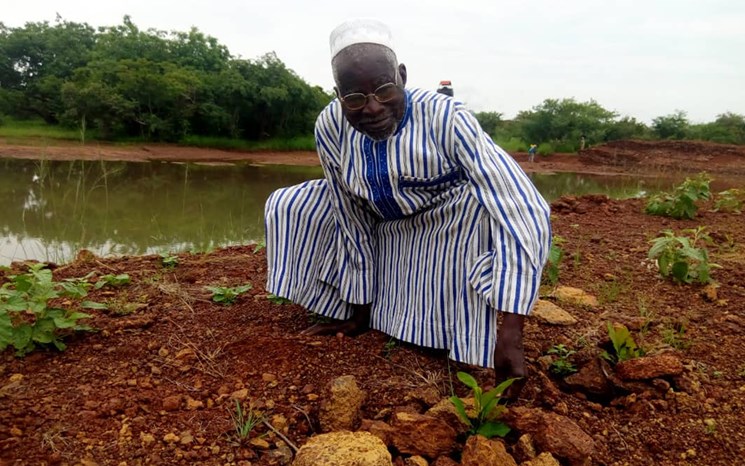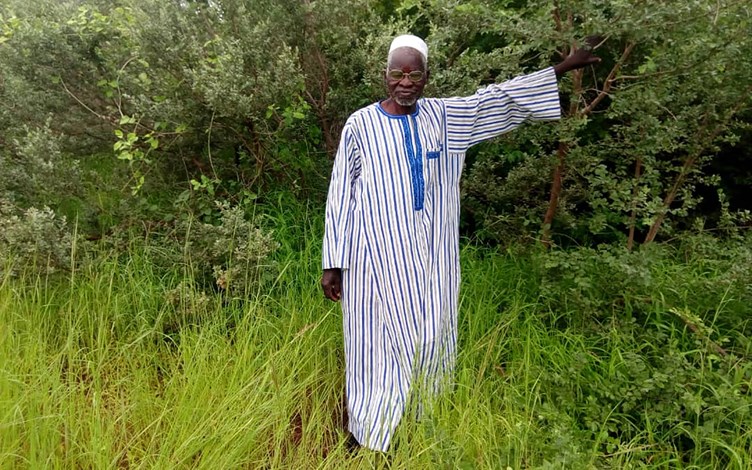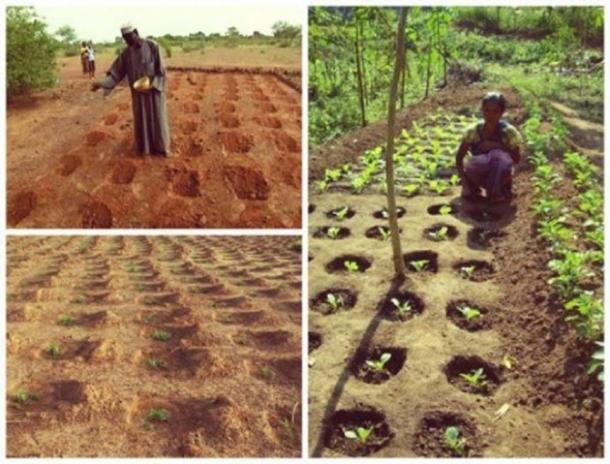Using Ancient Farming Technique, an African Man Who Stopped a Desert
Yacouba Sawadogo, a farmer from Burkina Faso, stopped desertification in his village by working together with his family to plant trees that have now grown into a vast forest. This in response to a long dry spell that, coupled with over-farming, over-grazing and over-population were plaguing the northern part of the country.
Initially, farmers in his community ridiculed him and thought he was going mad.
Reviving the forest with ancient techniques
With no access to modern tools and lack of education, he started using an ancient African farming practice called Zai, which leads to forest growth and improved soil quality.


Gradually, the barren land was transformed into a forty-hectare forest containing over 96 tree and 66 plant species, many of which edible and medicinal, as well as a number of animals.
“Thomas Sankara (who was President of Burkina Faso between 1983 and 1987, editor’s note) launched an appeal to develop initiatives to stop the advancement of the desert – Sawadogo recounts – and when he came to see my work, he asked me what technique I was using and I told him it was Zai. That’s why I’m also known as Yacoub Zai”.
Two Farming Techniques
Zaï is a farming technique that has been used traditionally in the western part of the Sahel, which includes Burkina Faso. In essence, this technique involves the digging of holes in the soil that is not very permeable, so that runoff can be collected.
These holes have a depth that ranges from 5 to 15 cm (1.97-5.91 inches), and a diameter of between 15 and 50 cm (5.91-19.69 inches). Fertilizers or compost may be placed in the holes to increase the number of nutrients in the soil.
Crops may then be planted in these holes. The advantages of this technique are many. For instance, this is a simple and cheap technique that may be utilized by any farmer. It is, however, a labor-intensive technique, and therefore, the cost is higher in terms of manpower. In addition, farmers need to monitor and maintain their Zaï holes. Nevertheless, the efficacy of Zaï is evident, as its use has resulted in increased crop yield.
Another traditional technique employed by Sawadogo is known as cordons pierreux. Like Zaï, this technique is aimed at using runoff to combat desertification. Whilst the Zaï holes collect runoff, the cordons pierreux prevent the runoff from going to waste by slowing its flow.
This technique uses small blocks of rubble or stones that are arranged in a thin line across the field, which slows down the flow of runoff, thus allowing more time for the water to penetrate the earth.

The Man Who Stopped the Desert, the documentary
After embarking on such ground-breaking work in the semi-arid African desert, Sawadogo was featured in a 2010 documentary, The Man Who Stopped the Desert, becoming famous around the world.
In addition, he has conferred the Right Livelihood Award, widely known as the “alternative Nobel Prize” in 2018, “for turning barren land into forest and demonstrating how farmers can regenerate their soil with innovative use of indigenous and local knowledge”.
Partners coming on board
The technique he utilizes, Zai, has also spread to neighboring Mali, and he teaches it to the many people who come to learn from him.
“I want to design a training program that will be the starting point for many fruitful exchanges across the region and there are so many farmers from neighboring villages that visit me for advice on good quality seeds to plant,” Sawadogo says. “I’ve chosen not to keep my farming methods as secrets to myself”.
Even the Centre on International Cooperation (CIC), a foreign policy think tank based in New York University, proposes to encourage millions of Western African farmers to invest in trees.
This will help them improve their food security and climate change adaptation, according to natural resources management specialist Chris Reji.
Threats to the forest haven’t stopped hope
Today, Sawadogo is facing serious problems from several quarters. Northern Burkina Faso has become increasingly volatile due to incursions by jihadist groups and inter-communal conflict, which have brought insurgent attacks and social unrest.
An expansion project in the area has taken up a considerable portion of the forest he spent years growing: homes have been built on his land, with little compensation being offered. In addition, the entire family is on guard to protect the area from people wanting to steal wood.
However, the farmer’s message about the future of the environment and conservation remains profound. “If you cut down ten trees a day and fail to plant even once a year, we’re headed for destruction”.





